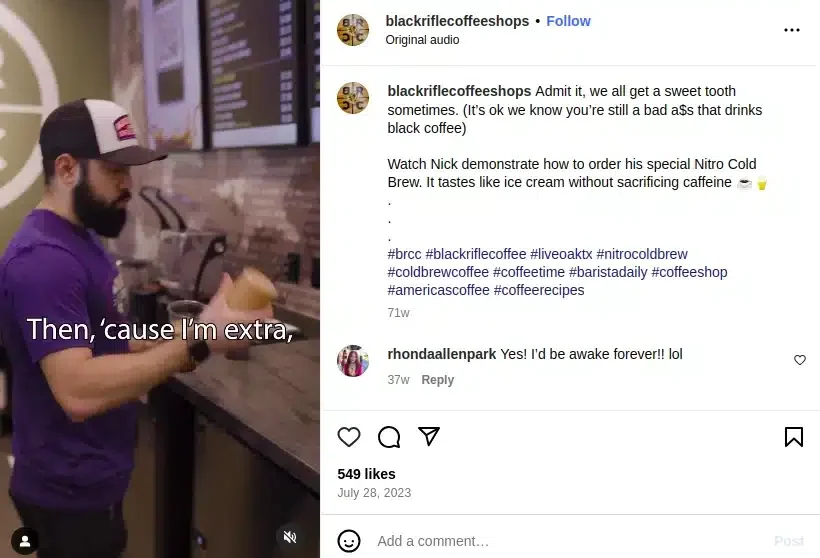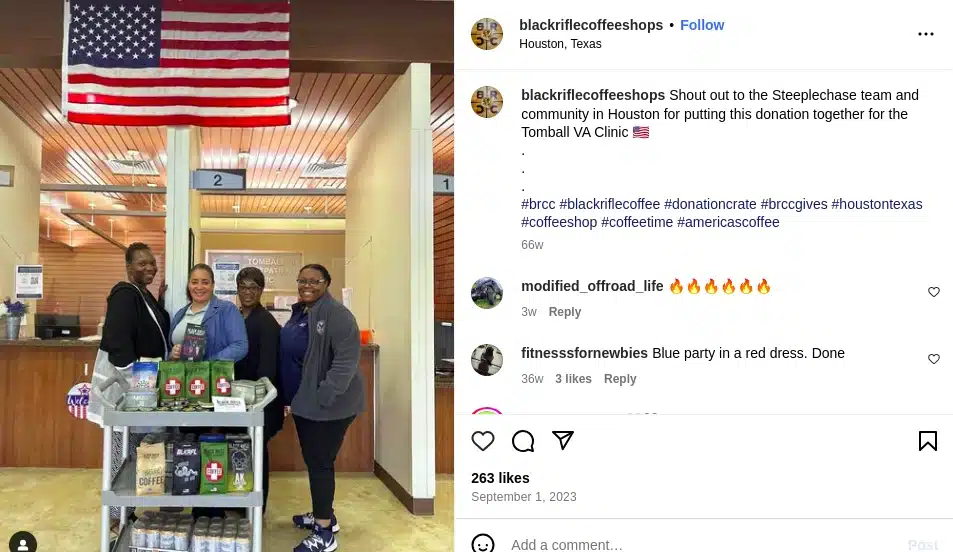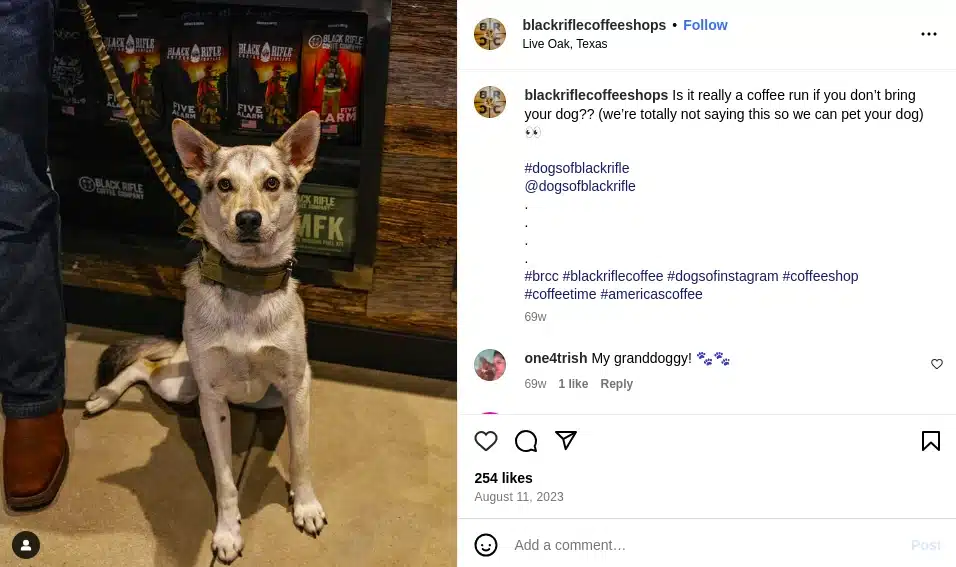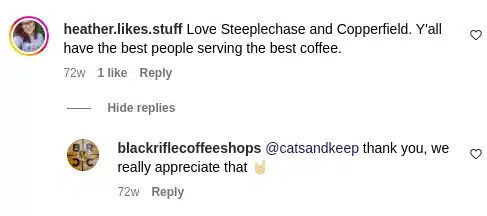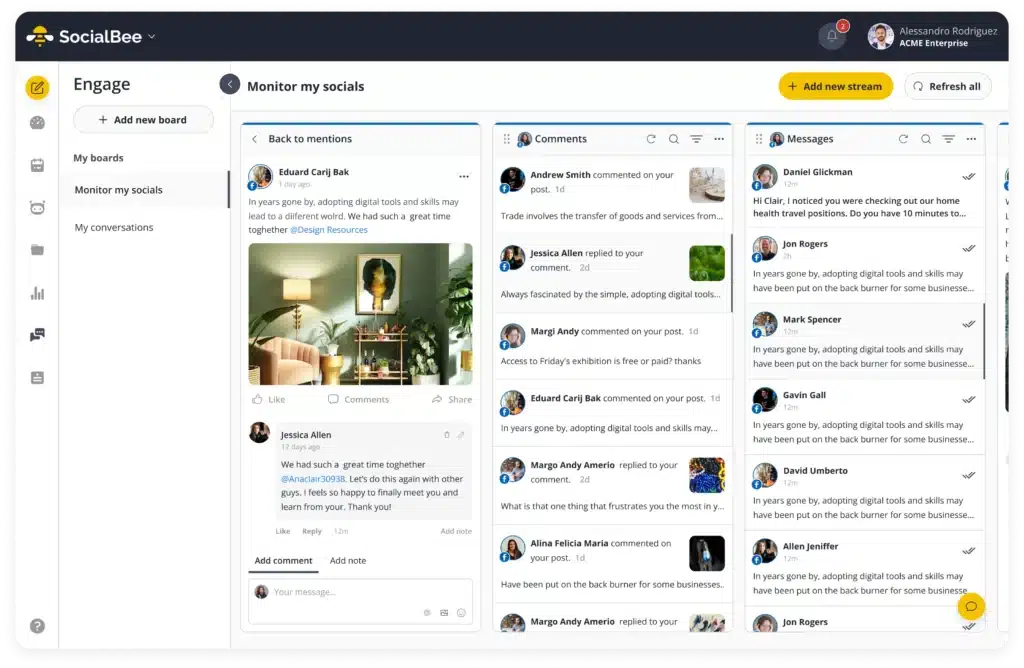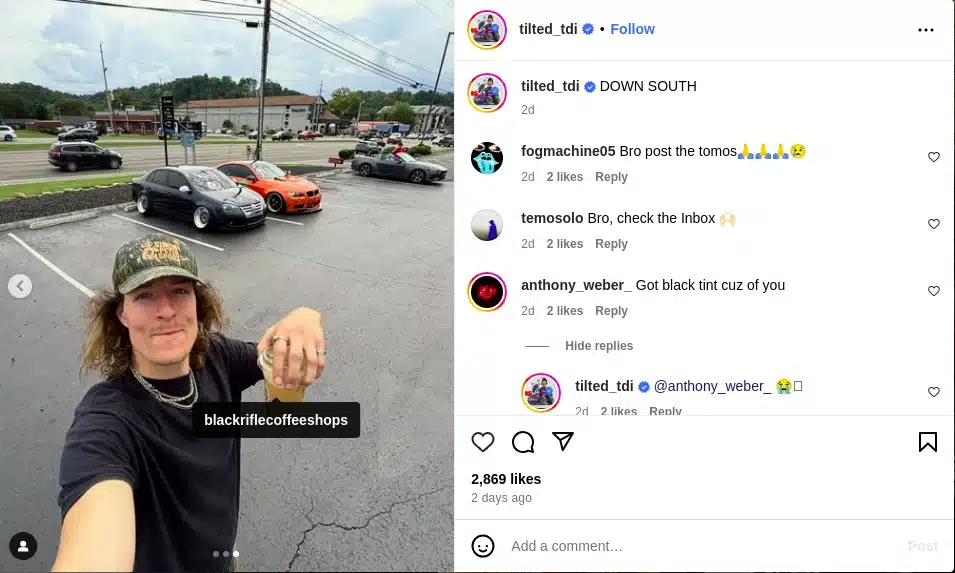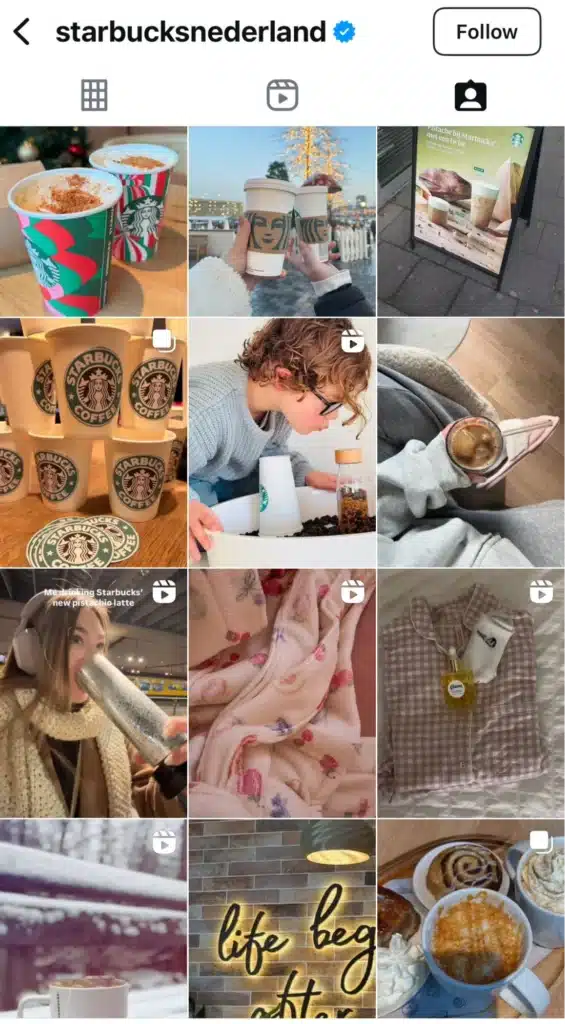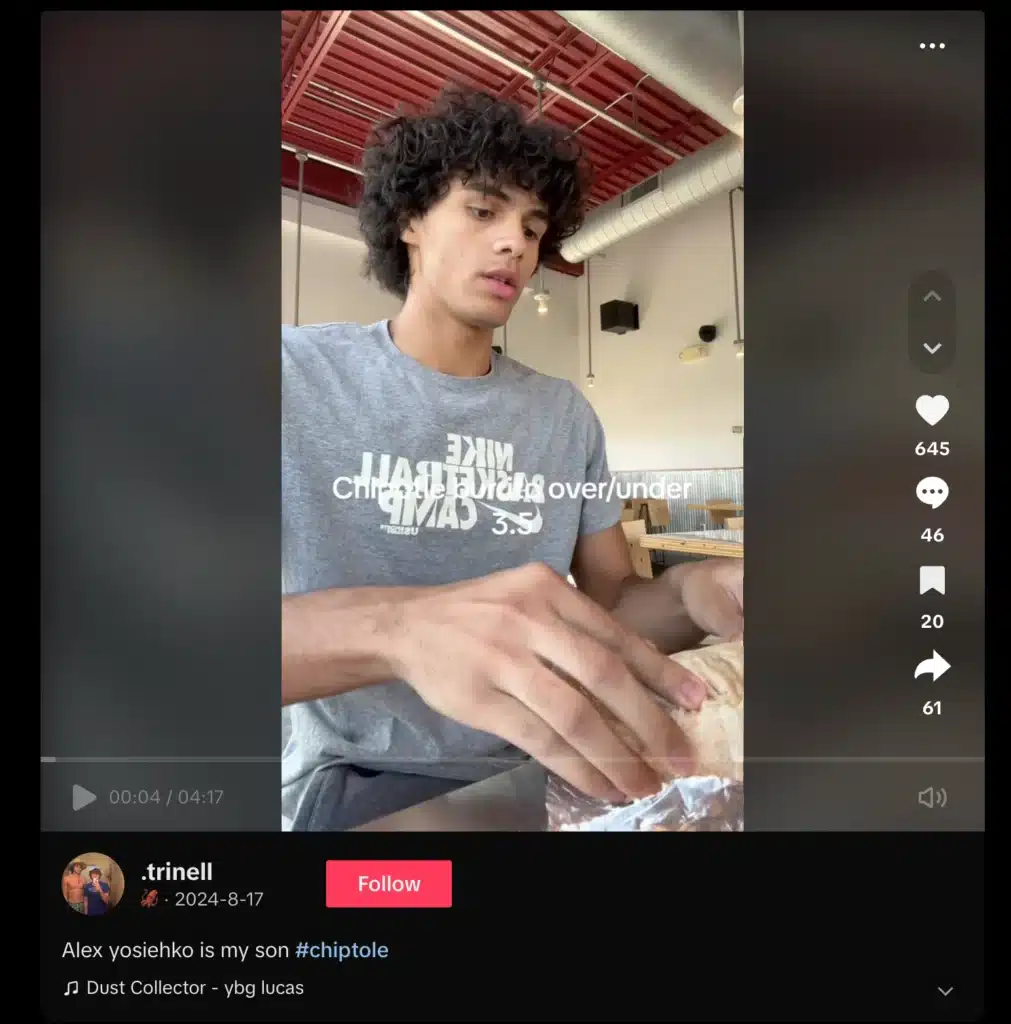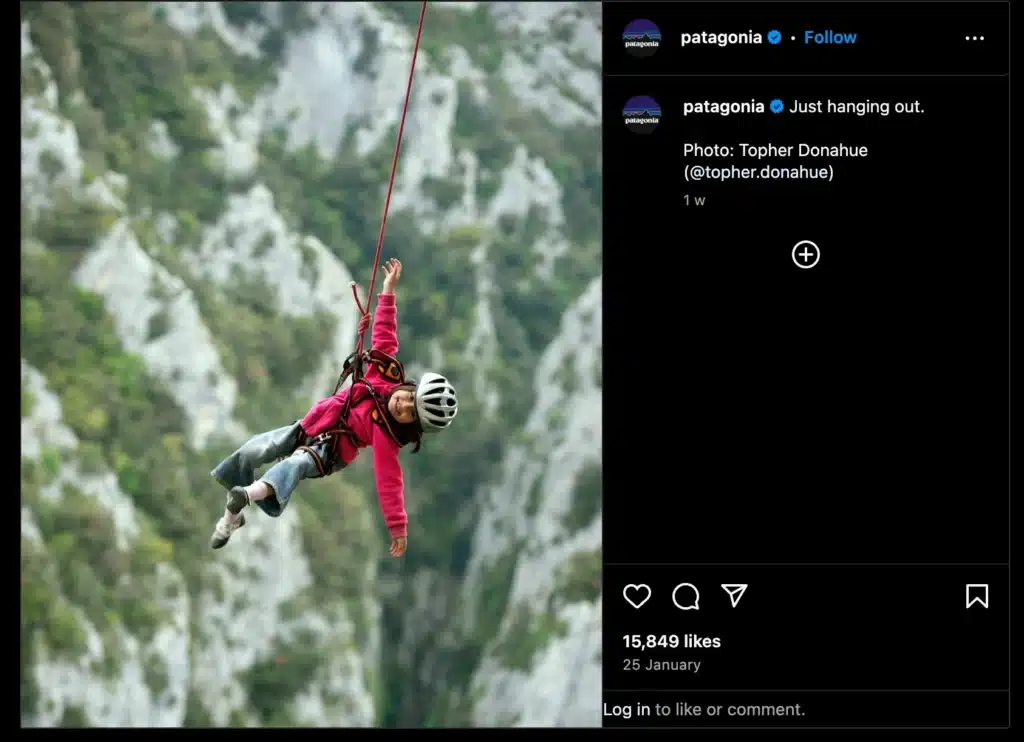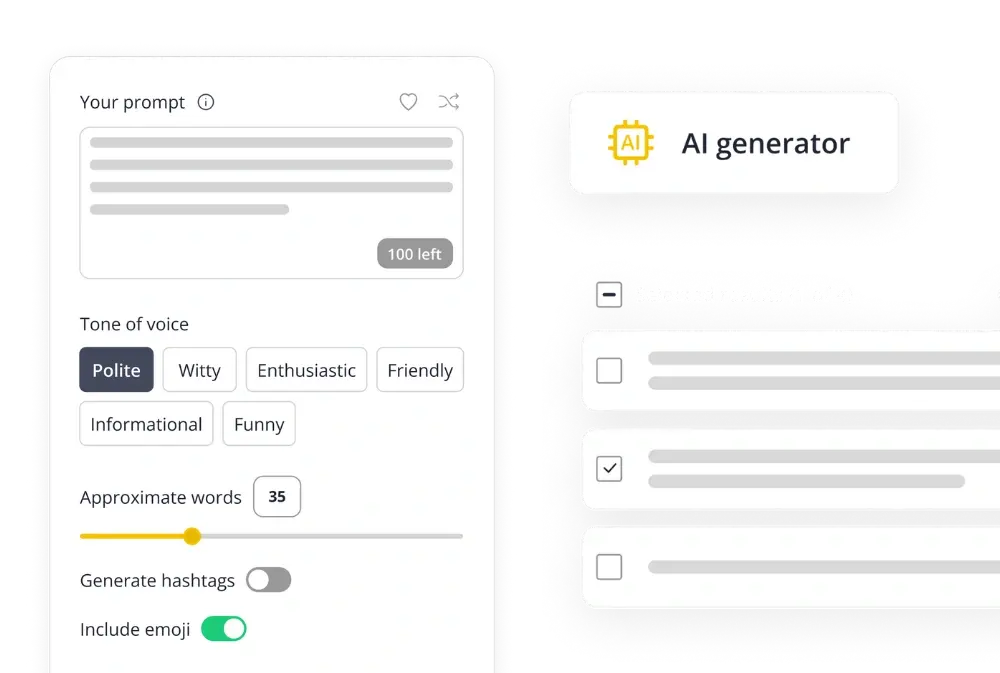
Guest Author
How often does your brand come up in conversations? That’s what Share of Voice (SOV) measures. It shows how much space you take up in your industry compared to competitors. Tracking metrics like brand mentions, engagement, and industry buzz can help you understand where you stand and how to get noticed more
Share of voice on social media is one of these competitive metrics. What is it, why should you track it, and how should you improve the metric? Read on to get all of these questions answered.
We’re SocialBee LABS SRL, part of WebPros. We use the information you provide to share relevant content and product updates, as outlined in our Privacy Policy. You can opt out anytime.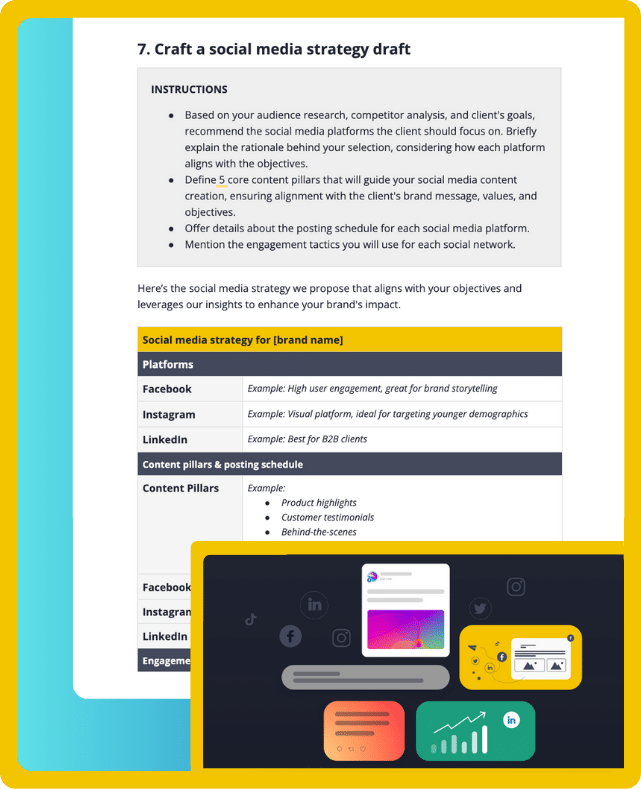
Short summary
- Share of voice (SOV) in social media tracks how much of the industry conversation your brand owns compared to key competitors. It reflects your brand’s visibility, influence, and customer engagement across social media platforms.
- Monitoring social media mentions, brand conversations, and competitor metrics gives insights into where your brand stands. It helps fine-tune messaging, balance organic search and paid advertising clicks, shape consumer perception, and spot growth opportunities.
- Share of voice analysis refers to more than just social media. It applies to SEO, PPC ads, and PR coverage too. Each has its formula, tracking factors like keyword rankings, advertising volume, and media mentions to calculate share.
- To increase social media engagement, brands should make their content more relatable, focus on storytelling, participate in industry conversations, and leverage user-generated content. Active participation in communities and collaborations with other brands also help.
- A strong share of voice in social media means more people see, discuss, and trust your brand. It leads to better reach, higher audience interaction, and ultimately, more conversions and sales.
Table of contents
What is the share of voice in social media?
Share of Voice (SOV) in social media measures how much of the conversation around a particular industry, topic, or keyword is about your own brand compared to competitors. It reflects your brand’s visibility, impact, and influence across major social media networks.
To track SOV, marketers analyze social media mentions, brand communications, and customer engagement across various marketing channels. It can be measured for PPC keywords, SEO keywords, or specific discussions on social media, providing insights into a brand’s competitive standing and audience reach.
How to measure share of voice across marketing channels
Calculating SOV is pretty simple: your overall brand voice volume is divided by the total market brand volume. What’s tricky here is to define the market and find out the impact of your and competing brands, on all digital marketing fronts.
Let’s look at how it’s typically done with various marketing channels:
- Social media share of voice measurement
- SEO share of voice calculation
- PPC share of voice assessment
- PR share of voice estimation
1. Social media share of voice measurement
There are multiple ways to measure social media share of voice because you can measure it against different brand metrics, yet the share of voice formula stays the same:
SOV = your brand’s metric/competitor brands’ metrics*100%
The social media metrics themselves can differ. Here are a few best picks:
- Brand mentions
- Branded hashtag use
- Post reach
- Involvement in industry-related conversations
To notice those conversations and mentions on social media, you’ll need social media monitoring tools.
2. SEO share of voice calculation
In SEO, the SOV is calculated for a keyword with a traffic forecast. The formula for measuring SEO share is this: SOV = your site’s traffic forecast for a keyword/traffic forecast of other pages in the top 20*100%
The higher your brand’s position is on the search engine result page, the more SOV you have. You can calculate this metric with SEO tools like the Rank Tracker by SE Ranking. It tracks your site’s traffic forecast for a keyword or a keyword group and compares it with the competing pages in the top 20.
3. PPC share of voice assessment
Measuring the share of voice in paid advertising has a straightforward formula: SOV = your advertising volume/competing advertising volume*100%
To calculate it, narrow the scope to the list of relevant keywords that you run your campaign on or a list of keywords your competitors use. Calculate how many clicks or exposures your ads get compared to competing ads for the same keyword group.
You can do it with most PPC tools like your Google Ads account.
4. PR share of voice estimation
Some companies include social media in PR SOV calculations. Since we focus on social media specifically in this post, PR share of voice means the share of news media and blog coverage you receive compared to the competition.
The formula for measuring PR share of voice is: SOV = your brand media mentions/competitor media mentions*100%
Narrow it to a few hundred important websites or scan the whole web to get a more detailed picture. In either case, you’ll need a brand monitoring tool to be sure of the quality of your share of voice data points.
Reasons to concentrate on tracking social share of voice
Social media SOV isn’t just a nice-to-have metric, but a direct way to measure your brand’s performance. Tracking social media mentions and your brand’s share of the conversation helps you see where you stand against competitors and where there’s room to grow.
Why does this matter? Because understanding your share of voice gives you the power to make smarter marketing moves.
Here’s how to understand your current share of voices:
- See where your brand stands – Are you leading the conversation or getting lost in the noise?
- Spot growth opportunities – Identify gaps in your market share and adjust your marketing strategy.
- Improve your social media campaigns – Use social media analytics tools to track the impact of your marketing campaigns.
- Fine-tune your messaging – Monitor customer engagement to understand what resonates with your audience.
- Balance organic and paid strategies – Use insights to decide when to invest in paid advertising or double down on organic search traffic.
By keeping an eye on social media platforms, you can also refine your social media campaigns and adjust your different marketing channels to maximize reach. Plus, using share of voice tools makes it easier to measure your brand’s visibility and find new ways to stand out.
Bottom line: tracking your share of voice isn’t just about numbers, it’s also about understanding how people talk about your brand. Sentiment analysis, context, and engagement levels can reveal whether your brand is gaining positive attention or if there’s room to improve. The more insights you gather, the better you can refine your social media strategy and stay ahead of the competition.
How to increase your share of voice in social media
To increase your share of voice on social media, you need to be able to cut through the noise. A low share of voice often means limited reach and engagement, so you need to find ways to stand out.
The beauty of this marketing channel is that it doesn’t require constant high spending to increase SOV, like in paid advertising. It requires a strategic, creative approach.
Here’s how you can increase a brand’s social share of voice:
- Humanize your brand
- Create quality content
- Focus on engagement and conversations
- Be always “on”
- Engage in communities and develop yours
- Collaborate with other brands
- Encourage user-generated content
1. Humanize your brand
The first thing to improve your share of voice on social media is to add a human touch to your brand tone. This is essential to stand out as most brands on social will sound corporate, boring, and ultimately, off.
Out of all people who have unfollowed a brand on social media, 68% cite posting inauthentic content as the reason. So, fostering a strong brand voice that sounds human is important. How do you create this consistent tone?
The most effective way is putting a human face behind the brand. Putting your employees or hiring an energetic content creator to be the representative of your brand can increase trust and create a consistent brand voice.
Use storytelling to share moments from your team’s daily life, behind-the-scenes content, or genuine customer feedback. This helps humanize your brand and create an authentic connection with your audience.
For consistency, establish a brand style guide to ensure all content aligns with your voice and messaging, whether it’s curated or created in-house.
2. Create quality content
Inauthentic content triggers people to unsubscribe, but so does boring content. Creating quality content in mass is the biggest struggle for many brands. If you can find a way to make your content interesting, it will promote your brand to popularity as social media users will love it, engage with it, and boost it in the algorithm.
Good social media voice examples always have one of these ingredients:
- Humor
- Inspiration
- Authenticity
- Sharing unique knowledge
- Starting a conversation
To ensure your content works across different industries, consider these general approaches:
- Use storytelling to humanize your brand personality.
- Share behind-the-scenes content to create a more personal connection.
- Educate your audience with practical tips or industry insights.
- Use interactive content like polls or Q&A sessions to boost engagement.
- Showcase user-generated content to build community trust.
Think about what makes your company and your content interesting, take inspiration from content idea lists, and experiment. This will lead you to find a format that brings in users and increases the share of voice.
3. Focus on engagement & conversations
One of the best ways to increase your brand’s organic reach is to encourage meaningful engagement. The more people interact with a post (commenting, sharing, or tagging others), the more the platform’s algorithm recognizes it as valuable content, expanding its reach.
But people won’t engage with just any post.
Here’s how to spark conversations in line with your unique brand voice:
- Ask the right questions. Instead of generic prompts, tailor your questions to your industry. For example, a SaaS company could ask, “What’s one productivity tool you can’t live without?” rather than a broad “How’s your day going?”
- Leverage your team. Get employees, brand ambassadors, or power users to kick off discussions in the comments, making it easier for others to join.
- Use visual cues. Posts with text overlays on images, polls, or carousel formats tend to catch attention faster than plain text.
- Engage in real-time. Respond quickly to comments to keep the conversation going, especially in the first hour after posting.
Instead of just broadcasting content, think about how to invite participation and create a two-way conversation. That’s how you build an engaged community, not just an audience.
There are two more ways you can improve engagement and gain trust with your audience.
The first is doing live sessions. Here’s where your brand representative comes in handy, who can speak for your brand and answer questions users have for your brand.
The other is finding conversations that relate to your industry online and engaging in them from the brand account. Use social listening tools to find these conversations in the comment sections.
PRO TIP
Engagement isn’t just about comments. It includes mentions, direct messages, and tagged posts too. If you’re not tracking these, you could be missing key opportunities to connect with your audience.
SocialBee helps you track brand mentions, monitor comments across major social media platforms, and keep DMs organized in one place. By staying responsive and proactive, you can turn engagement into real community growth.
Use SocialBee for your social media listening!
4. Be always “on”
You might think that posting frequently on social media could overwhelm your audience, but the opposite is often true. 44% of users want the brands they follow to be more active. Staying visible keeps your brand top of mind and builds trust.
However, this doesn’t mean posting everything and anything. Instead, focus on content that aligns with your brand’s core values and niche. Whether it’s industry insights, customer stories, or product updates, consistency matters more than volume.
Another key aspect of increasing your share of voice is staying on top of trends. Major events like the Super Bowl or industry-specific news can offer opportunities for timely and relevant content. Engage in conversations that matter to your audience rather than chasing every viral moment.
Also, find discussions related to your industry and actively participate. Reply to comments, start conversations, and interact with social media posts from other brands and creators. A strong presence isn’t just about posting, it’s about showing up where your audience is already talking. That’s what helps you create a well-defined brand voice.
5. Engage in communities and develop yours
Social media community management helps build strong relationships with your audience, turning them into brand advocates and attracting new followers.
To get started, join existing communities on platforms like LinkedIn (particularly for B2B networking), Facebook, and Discord. Engage in discussions, provide valuable insights, and contribute meaningfully rather than just promoting your brand.
Another approach is leveraging influencers who actively engage with their audience in comment sections. Engaging with discussions in these spaces can help increase visibility and build relationships within your industry.
Once you’ve established your brand’s presence, consider creating your own space, whether it’s a LinkedIn group, a branded Discord server, or a dedicated subreddit. Many brands, like Notion’s ambassador community or Figma’s design groups, use this strategy to foster user-generated discussions and customer loyalty.
6. Collaborate with other brands
The best way to expand your reach on social media is through collaborations, but it’s important to be realistic about how they work. Most influencer partnerships need a budget, and simply “exchanging exposure” isn’t always enough to secure a deal.
To find relevant influencers, look for those posting about your industry or brands that align with your audience but aren’t direct competitors. You can use influencer marketing platforms like Aspire, Heepsy, or Upfluence to find and vet potential partners.
If you’re looking for brand collaborations, research relevant hashtags and explore accounts engaging with your industry. You don’t have to collaborate only with brands that do exactly what you do. For example, a beauty brand could team up with a fitness brand to promote wellness-related content.
Or a coffee company might collaborate with a car refurbishing influencer to engage audiences who value deep work, focus and efficiency.
If you’re thinking about working with influencers, just remember: most of them won’t post for free. Instead of offering “exposure,” talk about clear deliverables, what they’ll get in return, and make sure you’re on the same page when it comes to tone and content style.
For brand collaborations, reach out to businesses that complement yours. You can create joint content, co-host live events, or cross-promote on each other’s platforms. Successful partnerships focus on mutual benefits, ensuring both brands engage their audiences effectively.
7. Encourage user-generated content
Want more people talking about your brand? Get them to create content for you. User-generated content (UGC) not only increases your brand’s share of social media mentions, but also makes your brand more relatable and trustworthy.
Plus, people love seeing their own content featured. It builds loyalty and keeps engagement high.
Here’s how you can make UGC happen:
- Give them a reason to post – Brands like Starbucks get tagged in thousands of photos daily because their drinks are photogenic. Whether it’s cool packaging, a quirky store setup, or a fun unboxing experience, find a way to make your product camera-worthy.
- Start a challenge – Think about Chipotle’s viral TikTok challenges. Ask users to share their own take on your product and offer an incentive.
- Feature customers on your social media – Outdoor brands like Patagonia frequently reshare customer adventure photos, giving their followers a reason to tag them. This increases brand conversations and online visibility organically.
- Create a branded hashtag – Gymshark has #Gymshark66, where people share their fitness journeys. A strong hashtag makes it easy to track social media engagement and measure your campaign effectiveness.
- Ask for opinions – Instead of just sharing content, get people involved. Restaurants, for example, could ask followers to vote on a new menu item, turning simple interactions like likes and comments into valuable insights for their social media team.
User-generated content helps you build a strong community, improve voice metrics, and gain a real competitive advantage, all without creating extra content yourself. Just keep an eye on social media analytics tools to track what works best.
Frequently asked questions
While SOV is about measuring brand awareness through competitor metrics and impression share, SOI is about the depth of impact and influence a brand has over its audience.
Share of Voice (SOV) measures a brand’s share of social media mentions, online conversations, paid ads, and organic traffic compared to competitors, helping brands track market share, brand’s visibility, and campaign effectiveness across marketing channels.
Share of Influence (SOI), on the other hand, focuses on how much impact a brand has on its target audience, analyzing social media engagement, customer sentiment, and brand conversations to gauge authority rather than just volume.
100% Share of Voice (SOV) means that a brand’s share of social media mentions, online conversations, paid ads, and organic traffic completely dominates its industry, leaving no room for competitors.
This means that across social media accounts, news outlets, marketing channels, and digital marketing channels, only that brand is being discussed, searched for, or engaged with.
However, in reality, this is extremely rare, as brands always face competition in market share, SEO share, social media engagement, and organic website traffic.
Share of voice (SOV) in social media measures a brand’s share of social media mentions compared to competitors, helping marketing teams track online conversations, brand conversations, and customer sentiment. It includes data from social media accounts, news outlets, and other metrics like social media engagement, paid ads, and organic traffic compared to competitors.
Share of search, on the other hand, tracks a brand online by looking at organic website traffic, SEO share, and search engine presence rather than social media efforts.
Share of voice (SOV) refers to how much visibility your brand has across various digital marketing channels compared to competitors. It measures your presence in paid ads, social media, SEO, and other marketing efforts. For example, if your brand accounts for 20% of mentions in your industry, your SOV is 20%.
Market share, on the other hand, is the percentage of total sales your brand holds within a specific market. It reflects financial performance, not just visibility.
In short:
- Share of voice = brand visibility through marketing efforts
- Market share = brand’s portion of total sales in a market
While share of voice refers to your brand’s overall visibility across various digital marketing channels, impression share is a more specific metric used in advertising platforms like Google Ads. Impression share shows how often your ads were shown compared to how often they could have been shown, based on your campaign and keyword settings. This data is visible in the impression share columns within your ad dashboard.
In essence, impression share is a component of your total share of voice in paid search, helping you evaluate your marketing efforts on a more granular level.
Ready to boost your brand’s share of voice on social media channels?
Share of voice on social media is a metric that puts your SMM efforts in perspective. It compares how much of the conversation you dominate compared to your competition.
Increasing it means your brand appears in more people’s feeds, builds trust, and ultimately generates more sales. To improve this metric, create quality content with a human touch, stay active on social media by engaging in conversations, and build a community together with friendly brands.
Tracking, engaging, and managing your social media presence can get overwhelming—but SocialBee makes it easy. With powerful features for content scheduling, social media listening, and engagement tracking, you can monitor brand mentions, respond to comments and DMs, and keep your social media performance senon track, all from one dashboard.
Start tracking, engaging, and growing today. Start your 14-day free trial on SocialBee.
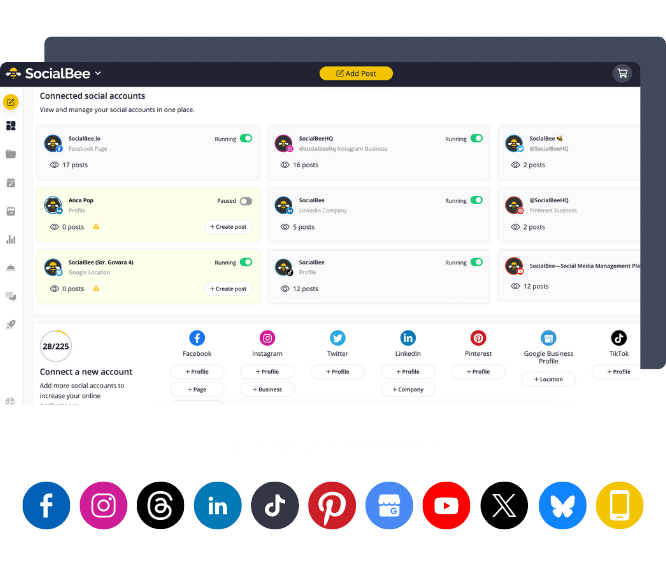
SocialBee: Your AI-powered social media management tool
About the author: Natalia Piskorovska is a Senior Outreach Specialist at SE Ranking, specializing in content promotion and partnership building. She creates outreach campaigns that help brands get noticed and connect with their audience. Outside of work, she enjoys cycling and exploring inspiring places. She loves sharing ideas over coffee and always looks for fresh perspectives in digital marketing.

